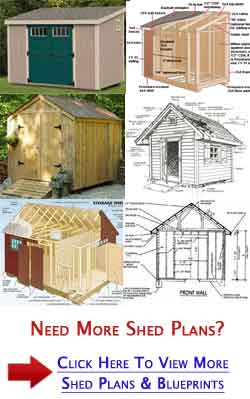

 www.beachybarns.com ```html
www.beachybarns.com ```html Opening: Creating a DIY "Shed House" Your Step-by-Step Guide Thinking of adding some extra living space to your property without breaking the bank? Building a "shed house" (a shed converted into a livable structure) can be a cost-effective and rewarding project. This guide will walk you through the necessary steps, from planning to finishing touches, to help you create your own functional and charming shed house.
Step 1: Planning and Preparation This is arguably the most critical step. Thorough planning will save you time, money, and headaches down the road. Here's what you need to consider: Zoning and Permits: Check your local zoning regulations and building codes. Many areas require permits for structures over a certain size or for any building intended for habitation. Ensure your plan complies with all regulations. Purpose: What will the shed house be used for? A home office? Guest suite? Art studio? The intended use will dictate the necessary features (e.g., plumbing, electrical). Size and Design: Determine the optimal size based on your needs and available space. Sketch out a basic floor plan, considering window and door placement for natural light and ventilation. Budget: Create a realistic budget that includes materials, tools, permits, and potential professional help. Existing Shed (or New Build): Are you converting an existing shed, or building a new one from scratch? If converting, assess its structural integrity. If building new, choose a shed design that suits your aesthetic and functional requirements. Consider a pre-fab shed kit for ease of construction.
Step 2: Foundation and Framing The foundation provides a stable base, and the framing creates the structural skeleton of your shed house. Foundation: Depending on your climate and soil conditions, you might need a concrete slab, gravel pad, or pier foundation. For small sheds, a well-compacted gravel pad may suffice. Larger structures will require a more substantial foundation. Framing (New Builds): If you're building from scratch, frame the walls, roof, and floor according to your plan. Use pressure-treated lumber for any wood that will be in contact with the ground. Ensure all framing members are properly connected and square. Framing (Existing Sheds): Inspect the existing framing for rot, insect damage, or structural weaknesses. Repair or replace any damaged members. Reinforce the framing as needed to support the added weight of insulation, drywall, and fixtures.
Step 3: Exterior Shell Walls, Roof, and Windows/Doors This step involves closing in the structure to protect it from the elements. Walls: Install exterior sheathing (e.g., plywood or OSB) to the framing. This provides a nailing surface for siding and adds structural rigidity. Roof: Cover the roof framing with sheathing and then install roofing material (e.g., shingles, metal roofing). Pay close attention to flashing around chimneys and vents to prevent leaks. Windows and Doors: Install windows and doors according to the manufacturer's instructions. Ensure they are properly sealed to prevent drafts and water intrusion. Consider energy-efficient windows and doors to improve insulation. Siding: Choose a siding material that complements your aesthetic and provides weather protection. Options include wood siding, vinyl siding, metal siding, and fiber cement siding. Install the siding according to the manufacturer's instructions, ensuring proper overlap and sealing.
Step 4: Interior Finishing Insulation, Electrical, Plumbing, and Drywall Transforming the shed into a comfortable living space involves adding essential interior features. Insulation: Insulate the walls, roof, and floor to regulate temperature and reduce energy costs. Options include fiberglass batt insulation, spray foam insulation, and rigid foam board insulation. Choose an insulation R-value appropriate for your climate. Electrical: Hire a qualified electrician to run electrical wiring, install outlets, switches, and light fixtures. Obtain necessary electrical permits. Plan the electrical layout carefully to meet your needs. Plumbing (if applicable): If your shed house will have a bathroom or kitchen, hire a licensed plumber to install plumbing for water supply and drainage. Obtain necessary plumbing permits. Consider a composting toilet if a traditional septic system is not feasible. Drywall: Install drywall on the walls and ceiling. Tape, mud, and sand the drywall seams to create a smooth surface.
Step 5: Interior Details and Finishing Touches This is where you personalize the space and make it truly your own. Flooring: Install flooring of your choice. Options include laminate flooring, hardwood flooring, tile flooring, and carpet. Painting: Paint the walls and ceiling with your desired colors. Trim: Install trim around windows, doors, and baseboards to add a finished look. Fixtures: Install light fixtures, outlets, switches, and plumbing fixtures (if applicable). Cabinets and Appliances (if applicable): Install kitchen cabinets, appliances, and bathroom fixtures if your shed house includes a kitchen or bathroom. Furnishings: Furnish the shed house with furniture, decor, and other personal items.
Conclusion: Enjoy Your New Shed House! Building a shed house is a significant undertaking, but with careful planning and execution, you can create a functional and charming living space that adds value to your property. Remember to prioritize safety, comply with local regulations, and don't be afraid to seek professional help when needed. Enjoy your new shed house!
``` Sheds With Porches
 www.beachybarns.com
www.beachybarns.com Quality Shed Gallery
 countrytymesheds.com
countrytymesheds.com Keter Manor 6 X 3 Ft. Storage Shed
 uk.pinterest.com
uk.pinterest.com



0 komentar:
Posting Komentar